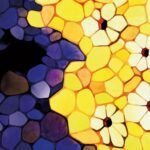About
Heart Morphogenesis (Department of Developmental and Stem Cell Biology) – Sigolène Meilhac
The Unit of Heart Morphogenesis addresses the origin of structural congenital heart defects. We study in particular how the patterning of cardiac precursor cells impacts heart morphogenesis from their incorporation into the embryonic heart tube to the development of structural defects impairing the double blood circulation. We use the mouse as a main model, as well as cardioids, primary cell cultures, embryo cultures and patient data.
Stem Cells and Development (Department of Developmental and Stem Cell Biology) – Shahragim Tajbakhsh
Our lab investigates multiple aspects of stem cell biology in the context of development, growth, regeneration, ageing and disease. The focus is on skeletal muscle using genetically modified mice. The context of prenatal and postnatal development is examined in mouse, and processes are considered in an evolutionary context. Basic cellular processes including cell quiescence, modes of proliferation (symmetric/asymmetric) and lineage progression in normal and pathological conditions are being investigated. Pathology models include those that perturb muscle function (ex. Myopathies) or indirectly (ex. influenza virus infection; cancer cachexia).
Zebrafish Neurogenetics (Department of Developmental and Stem Cell Biology) – Laure Bally-Cuif
Our team studies the principles and mechanisms that control the formation, maintenance, and recruitment of neural stem cells (NSCs) in the adult vertebrate brain. We investigate fundamental NSC decisions such as the quiescence-proliferation balance, the choice of cell division mode, and lineage progression towards the generation of neurons. Our main model system is the telencephalon of the adult zebrafish, where NSCs are numerous and easily accessible for experimentation in vivo; and our approaches include functional genetics, lineage tracing, intravital imaging, quantitative image analysis and modeling. When molecularly relevant, we extend to human brain organoids to probe the function of candidate pathways in human neural progenitor cells.
Control of Chronic Viral Infections (Department of Virology) – Lisa Chakrabarti
The group focuses on the development of organ-on-chip models applicable to the study of respiratory viruses. We have previously studied SARS-CoV-2 replication in reconstructed human bronchial/nasal epithelia (Robinot et al., Nat Comm 2021) and we are pursuing the comparison of SARS-CoV-2 variant properties in this system. We also aim to develop organ-on-chips that model the airways and the lung alveoli in the frame of the 3D-LUNGO PEPR project, in collaboration with the team of Samy Gobaa at the Biomaterials and Microfluidics platform. The objective is to model the interactions between the epithelial and vascular compartments, and to ultimately study the impact of infiltrated immune cells on the infected airway or alveolar epithelium.
Human Developmental Genetics (Department of Developmental and Stem Cell Biology) – Ken McElreavey
We are creating human organoids that precisely mimic the in vivo specification and differentiation of the human gonads (ovary or testis) from pluripotent stem cells. These gonadal organoids are used to determine gene regulatory networks involved in regulation of reprogramming, cell fate choice as well as tissue and organ formation. We use these models to study naturally-occuring genetic variants that cause gonadal disease (sex-reversal; physiological tissue homeostasis and its alterations) and how these genetic variants cause tissue/organ remodelling. We have developed these technologies ourselves in the unit from human iPSCs – organoids, gonad on a chip (the later in collaboration with Samy Gobaa).
Nuclear Organization and Oncogenesis (Department of Cell Biology & Infection) – Anne Dejean
We are investigating chromatin and post-translational mechanisms that govern normal and pathological cell fate decisions, focusing mainly on early embryo development and cancer. Leveraging recently developed in vitro models of early embryos, our goal is to identify novel regulators of cell fate commitment through perturbation screening approaches. This should hopefully lead to a better understanding of the genetic programs underlying normal and altered developmental processes.
